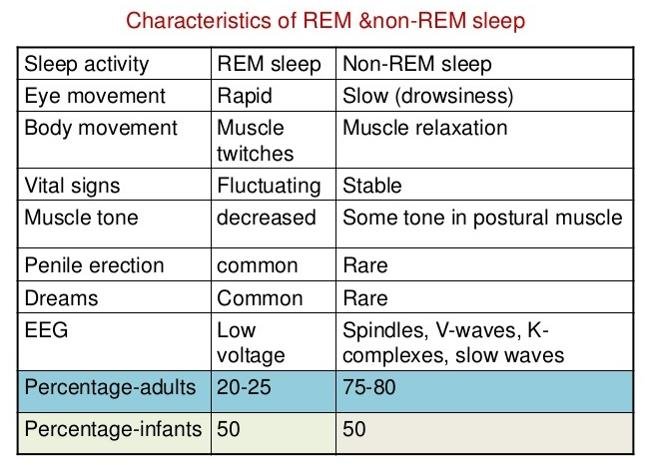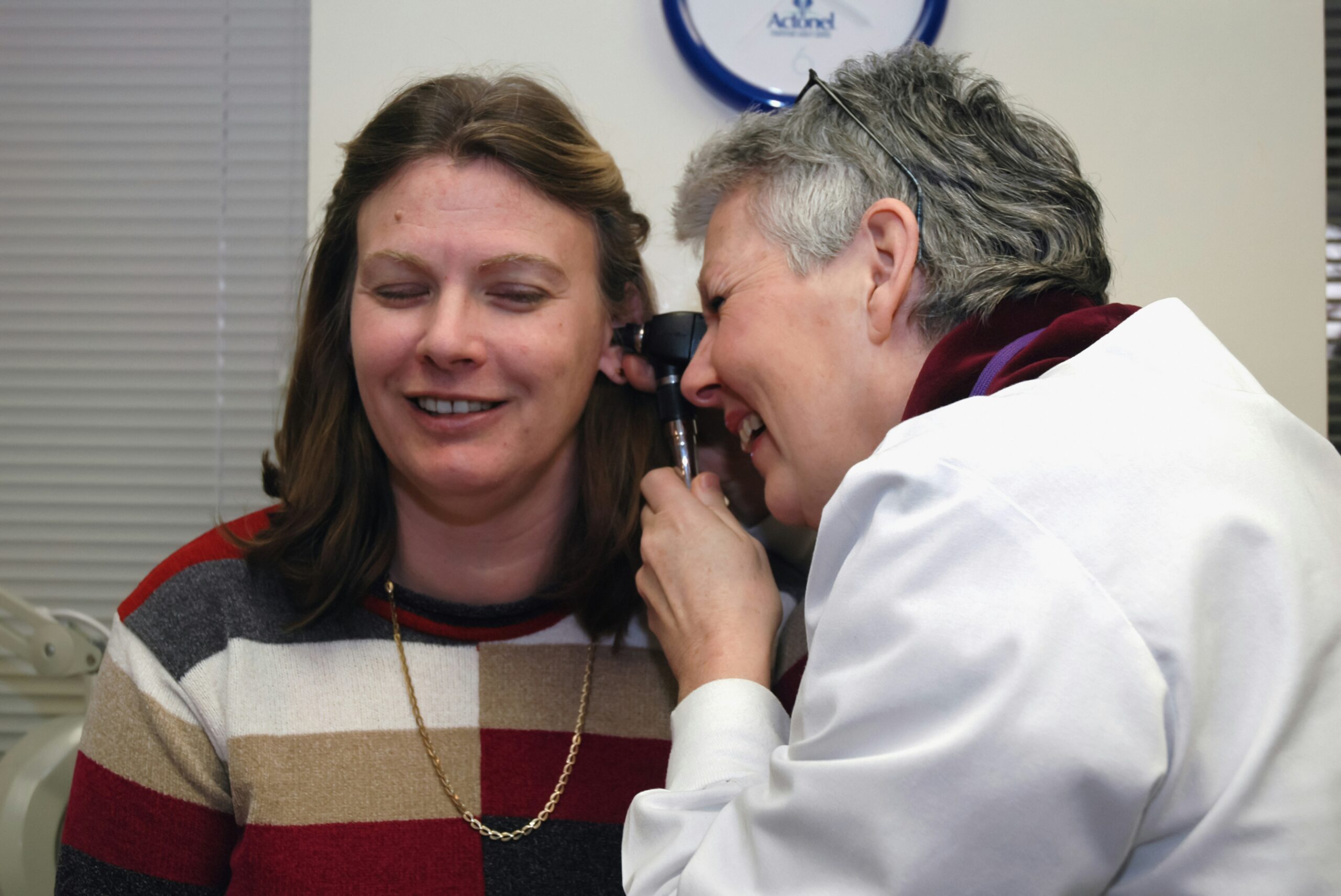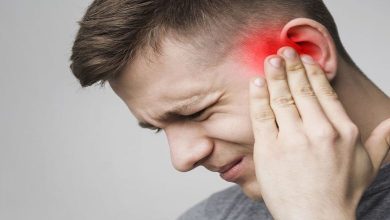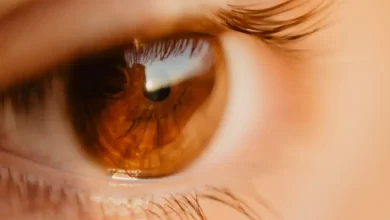Don’t Know About REM Sleep?

The brain goes through four stages during the sleep cycle, one of which is rapid eye movement (REM) sleep. About 90 minutes after falling asleep, a person enters this stage of the sleep cycle. Muscle relaxation, eye movement, faster respiration, and increased brain activity are just a few of the physiological changes that occur.
What Happens During REM Sleep?
Your eyes move rapidly behind your closed eyes during REM sleep, your heart rate increases, and your breathing becomes irregular. During REM sleep, your brain is highly active, and your brain waves become more variable, in contrast to other stages of sleep when your brain waves slow down.
Much of your body functions similarly to how it does when you’re awake during REM sleep, with the exception that your eyes are closed and you have a temporary loss of muscle tone. This is thought to be a protective mechanism to prevent you from acting out your dreams and injuring yourself, according to researchers. This hypothesis is losing steam now that scientists know we can have dreams during non-REM sleep stages when our bodies are not paralyzed.
REM sleep is experienced by a variety of land-based species, including humans and other mammals, reptiles such as the Australian bearded dragon, and most birds. REM sleep, on the other hand, can look different depending on the species. Because owls can’t move their eyes in their skulls, they don’t have actual rapid eye movements during REM sleep. Furthermore, some birds only lose muscle tone in specific areas, such as the neck, during REM sleep, allowing their heads to rest while remaining upright on one foot.
What Is REM Vs Non-REM Sleep?

Because it is so different from other stages of sleep, REM sleep is one of the most fascinating stages of sleep. Your eyes don’t move, your brain waves are much slower, and you keep some muscle tone in non-REM sleep. The following are characteristics that distinguish REM sleep from non-REM sleep:
- Brainwave activity that resembles wakefulness more than any other stage of sleep
- Complete muscle tone loss vs. non-REM sleep’s partial muscle tone loss
- Irregular breathing vs. non-REM sleep’s steady, slower breathing
- In non-REM sleep, there is a slowdown in heart rate, whereas in REM sleep, there is a rise in heart rate.
- The ability to be easily awoken during REM sleep rather than non-REM sleep
Why REM Sleep Is So Important?
REM sleep helps in the consolidation and processing of new information in the brain. After that, the information is stored in your long-term memory. REM sleep also aids in mental concentration and mood regulation, both of which are important for daily work performance and overall quality of life.
The consequences of not getting enough REM sleep are severe: Your immune system may be weakened, you may experience more intense pain, and the growth of new healthy cells and tissue in the body may be slowed if you don’t get enough sleep. Sleep disorders such as insomnia or obstructive sleep apnea, which causes you to wake up during the night, can cause poor REM sleep.
What Are the Signs Of REM Sleep?
During this stage of sleep, the brain and body go through a number of changes. REM sleep is characterized by the following symptoms:
- Changes in body temperature
- Twitching of the body, especially the face, arms, and legs
- Increased blood pressure and brain activity similar to that seen in awake states
- Their heart rate has increased.
- The brain consumes more oxygen.
- Eye movements that are quick
- Breathing that is rapid and irregular
- Arousal in a sexual relationship
Note- Atonia is a temporary paralysis that affects the majority of people.
Impact Of REM Sleep In Our life?
REM sleep is crucial for brain development, as well as other functions such as mood, dreaming, and memory.DreamsDreams happen when you’re sleeping in the rapid eye movement (REM) stage. A typical night consists of two hours of dreaming, interrupted by the sleep cycle.The exact reasons why we sleep are unknown to researchers. They are aware that newborns dream and that denying rats REM sleep significantly reduces their lifespan. Cold-blooded animals like turtles, lizards, and fish, on the other hand, do not have REM sleep stages.
Dreams can happen at any time during the night, but those that happen during REM sleep are the most frequent and vivid. [1]
Brain Development
According to research, REM sleep is critical for the development of the central nervous system (CNS) in children. The high levels of brain activity during this stage of sleep may aid in the development and strengthening of neural connections.
Memory Consolidation
Dreams could be one way for the brain to organize memories. The dream time could be a period during which the brain can reorganize and review the events of the day, as well as connect new and old experiences. Because the body is turned off, the brain can do this without any additional input or the risk of the body “acting out” the events of the day.
Dreams, according to some researchers, are more like background “noise” that is interpreted and organized. According to the activation-synthesis theory, dreams are simply the brain’s attempt to make sense of random signals that occur during sleep.[2]
Some people are better at controlling their dreams than others. For these people, their last thoughts before bedtime may have an impact on the content of their dreams.
Emotional Processing
REM sleep allows your brain to process emotions. Emotional processing may be aided by dreams, which are more vivid during REM sleep. REM sleep also activates your amygdala, the part of your brain that processes emotions.
Preparation for Awakening
Through the activation of our central nervous system, REM sleep may assist us in preparing to wake up. This could explain why, as the night goes on, we spend more time in REM sleep and find it easier to wake up during this stage.
When Does REM Sleep Take Place?
About 60 to 90 minutes after falling asleep, you have your first REM sleep cycle. Your cycle go through four stages of sleep during a full night’s sleep: three stages of non-REM sleep, followed by one stage of REM sleep. It takes 90 to 120 minutes to cycle through all of the sleep stages. You spend more time in REM sleep with each new cycle, with the majority of your REM sleep occurring in the second half of the night.
Each stage of sleep has its own characteristics:

Stage 1 (NREM): Low-amplitude mixed-frequency (LAMF) activity replaces the alpha brain waves that took over as you became drowsy. Your muscles are toned, and your breathing is steady.
Stage 2 (NREM): Your heart rate and body temperature both drop. As you progress toward deep sleep, sleep spindles and K-complexes, which are specific brain wave patterns, begin to appear.
Stage 3 (NREM): At this stage, your brain waves, known as delta waves, are the slowest of the night. It’s difficult to wake up from this stage, and those who do experience sleep inertia, a brief period of fogginess, and impaired cognitive performance. Your body repairs itself while you sleep, boosting your immune system and restoring your bones, muscles, and tissue.
Stage 4 (REM sleep): In this stage, your brain activity resembles that of when you are awake. Except for your eyes, which move quickly, you experience a loss of muscle tone. Your breathing becomes laboured, and your pulse quickens.
How Much REM Sleep Do You Need?
When our brains are still developing, we require the most REM sleep as infants and children. Each day, newborn babies sleep for eight hours in REM sleep. By adulthood, we only require two hours of REM sleep per night on average.
REM sleep is required in different amounts by different species. Horses and elephants, for example, can get by with little to no REM sleep, whereas cats, platypuses, and ferrets can sleep for up to eight hours per day. When they are infants, most mammals, like humans, spend a greater proportion of their sleep time in REM sleep than when they are adults.
Your body adjusts the length of your sleep throughout your life and from day to day based on your biological and energetic needs. Similarly, depending on your body’s needs, the amount of time you spend in each stage of sleep, including REM, can vary from night to night.
Example: Increased REM sleep8 has been observed in both animal and human studies after learning. Rats who learned a new maze spent more time in REM sleep for nearly a week afterward, according to a study. Another study looked at the effects of sleep on healthy college students’ working memory. The students were given two tests per day, with one group napping in between and the other remaining awake. The group that napped performed better, and the more time they spent in REM sleep during their nap, the better.
What Affects REM Sleep?
REM sleep deprivation appears to interfere with memory formation in both humans and animals, according to a number of studies. Memory problems linked to a lack of REM sleep, on the other hand, could be the result of overall sleep disruption, as the two frequently occur together. Furthermore, studies of the few rare individuals who do not experience REM sleep show that they have no memory or learning issues. REM sleep deprivation, on the other hand, interferes with the brain’s ability to generate new cells. To better understand the effects of REM sleep deprivation, more research is needed.
Sleep deprivation is not recommended in general. Sleep has an impact on many aspects of your health, including your mood and immune system. Sleep deprivation occurs when you don’t get enough sleep.
The following are examples of signs of sleep deprivation:
- Having trouble focusing during the day
- Excessive drowsiness during the day
- Memory loss or forgetfulness
Chronic sleep deprivation has been linked to health problems such as diabetes, depression, obesity, and cardiovascular disease over time.
Your cognitive performance will suffer if you don’t get enough sleep. Working memory is greatly impacted by sleep deprivation, so you may find yourself forgetting things more frequently. Short sleepers, who sleep less than six hours per night on a regular basis, can suffer from the same working memory problems as people who haven’t slept for two nights in a row. Short sleepers spend less time in REM sleep because they get most of their REM sleep in the second half of the night.
REM sleep may be suppressed by certain medications, such as those used to treat anxiety and depression.
Sleep Deprivation
When you’re sleep deprived, you don’t get the full amount of sleep that you require.
The following are symptoms of sleep deprivation:
- Immediately falling asleep after lying down for a few minutes.
- During the day, I’m drowsy.
- Microsleeps — short periods of sleep during the day when you’re otherwise awake — can be obtained by nodding off.
- Sleep deprivation can be hazardous to one’s health. According to the National Highway Traffic Safety Administration, driving while tired causes approximately 100,000 car accidents each year. It also kills 1500 people. Pull over if you become tired on the road. Driving while drowsy is dangerous.
What Are Good Sleep Habits?
Good sleep hygiene, also known as good sleep habits, is a set of practices that can help you get enough good sleep.
Do:
Establish a sleeping schedule: Even on weekends and vacations, go to bed and wake up at the same time every day.
Before going to bed, clear your mind: Make a to-do list early in the evening so you don’t lie awake worrying about the following day.
Make a comfortable sleeping environment: Make sure you have a comfortable bed and pillows. Dim the lights and stay away from loud noises. Maintain a comfortable temperature in the room.
Stay active every day: but try to avoid exercising before few hours bedtime.
Don’t:
Consume something: Late-day caffeine, nicotine, and alcohol consumption can disrupt your ability to fall and stay asleep.
Lie awake in bed: It’s better to engage in a soothing activity, such as reading, until you’re tired.
Nap during the day: If you’re tired during the day, a short nap (less than 30 minutes) is acceptable. However, avoid naps after 3 p.m.
Consider your negative thoughts: When going to bed, try to avoid negative thoughts like “If I don’t get enough sleep now, I won’t be able to get through my day tomorrow!”
Use electronics before bed: Electronics, such as your phone or tablet, can disrupt your body’s melatonin production. This hormone is released just before bedtime to aid in the feeling of exhaustion.
What Happens to Your Sleep Cycle as You Get Older?
The amount of time you spend in each sleep stage will change as you get older. The sleep variations associated with each age are explained below. This chart will help you understand how much time you’ll spend in each sleep stage.
Babies (0 to 12 months): Sleep brain waves are not distinguishable in newborns (0 to 12 months). As a result, newborns’ sleep stages are classified as Active, Quiet, or Indeterminate. Active sleep is comparable to REM sleep, while Quiet sleep is comparable to non-REM sleep. Newborns, on the whole, stay in Active sleep and wake up frequently for feedings. In the first year of life, their sleep requirements decrease slightly, from about 16 to 14 hours per 24 hours, and they begin to develop distinct sleep stages.
Toddlers (1 to 3 years): Once a child reaches the age of one, their sleep patterns begin to develop. Between the ages of one and three, children spend about 25% of their sleep in Stage 3 and 25% in REM. Toddlers get deeper and REM sleep because they sleep for 11 to 14 hours in a 24-hour period.
Preschool and School Age (3 to 12 years): Preschoolers and school-age children, like toddlers, will spend the majority of their sleep time in Stage 3. These kids require 9 to 13 hours of sleep per night (the younger they are, the more they need). In Stage 3, the body will crave more time as it grows.
Adolescents through Adulthood (12 years and up): Adolescents sleep for about 9 hours per night. However, as they grow older, this number may drop to 7 or 9 hours per night. At the age of 12, sleep patterns will resemble those of adults, with Stages 2 and 3 accounting for the majority of sleep.
When Should You Consult Your Doctor?

If you experience sleep deprivation symptoms or suspect you may have a sleep disorder such as REM sleep behavior disorder or nightmare disorder, consult your doctor. They can assist you in determining the source of your sleep problems and developing a treatment plan to help you sleep better.
Conclusion
We often sacrifice sleep as adults in order to fit more into our days. We don’t always prioritise sleep, whether it’s to get more work done or to have more time to socialise. However, as you can see, skipping sleep results in less time in each of the critical sleep stages. To restore cognitive function, improve memory, and restore muscle tone, each stage is required. A good night’s sleep will leave you feeling refreshed, relaxed, and ready to face the challenges of the day.





